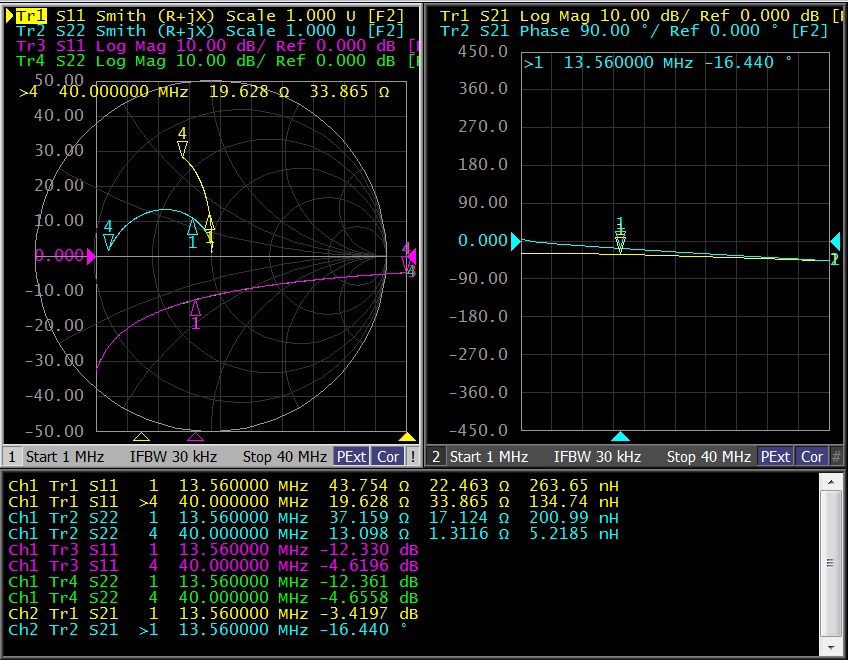Problem is real masured & simulation different in CST
the result is next photo.
1. why impedance is same to all frequency?
2. i really masured coil in Network analyzer
the result is 45~50 ohm
why result is different?
[ATTACH=CONFIG]14184


there is same model
but result is different.
cst & hfss do not trust..... right?
help me solution
The problem is your interpretation of results. You compare input impedance into a line (measurement) with characteristic line impedance (simulation). But these are different things.
Thank you for responding to my article.
i understood input impedance & characteristic impedance.
N.A result is input impedance and simulation result is Zo(characteristic impedance).
1.then, what is the reference impedance in cst. only Zo?
2.how can i get input impedance in cst?
last. why cst & hfss result is different? ex. S, Z matrix value
S-parameter values depend on the chosen reference impedance. You need to be careful what impedance they refer to: 50 Ohm fixed or the line impedance seen at the port ("generalized s-parameters")
I am not a CST user, so I don't know where you can find input impedance in the results. In other tools, it is often called "Zin" or something like that. Verify that the tools gives the value with 50 Ohm termination on the other end, so that you can directly compare to measured. Or calculate it yourself from S11 using the 50 Ohm S-params.
One common reason for difference between EM solver results is the user himself, and his solver settings.
What I do see in your screenshot is a solver warning that simulation stopped before steady state was reached. Check your settings for time steps.
